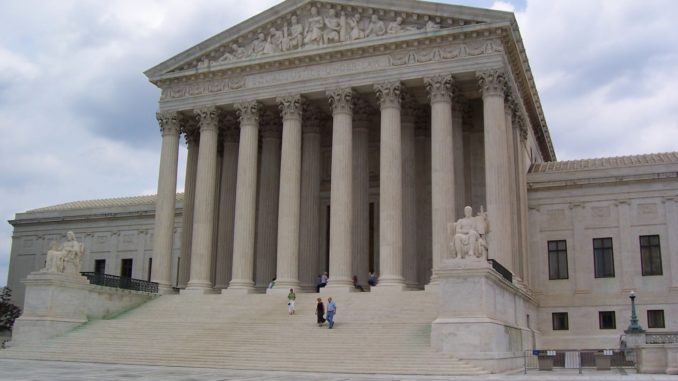
The Supreme Court announced Monday that it would consider whether partisan gerrymandering violates the Constitution. The move would potentially set the stage for a ruling that could impose limits on a practice that has helped the definition of American politics since the early days of the Republic, The New York Times reads.
While the Supreme Court has struck down voting districts as racial gerrymanders, it has never disallowed a legislative map because of partisan gerrymandering.
The new case is an appeal of a decision striking down the legislative map for the Wisconsin State Assembly drawn after Republicans gained control of the state’s government in 2010. The decision was the first from a federal court in more than 30 years to reject a voting map as an unconstitutional partisan gerrymander.
According to Judge Kenneth F. Ripple the map “was designed to make it more difficult for Democrats, compared to Republicans, to translate their votes into seats.”
Paul Smith, a lawyer for the voters who challenged the map, said it was time for the Supreme Court to act.
“Partisan gerrymandering of this kind is worse now than at any time in recent memory,” Mr. Smith said. “The Supreme Court has the opportunity to ensure the maps in Wisconsin are drawn fairly, and further, has the opportunity to create ground rules that safeguard every citizen’s right to freely choose their representatives.”
Wisconsin’s attorney general, Brad Schimel, said he was “thrilled the Supreme Court has granted our request” to hear the appeal. “Our redistricting process was entirely lawful and constitutional,” he said.
The case is part of a larger debate over political gerrymandering. Some critics, like Arnold Schwarzenegger, a Republican and the former governor of California, say districts should be drawn by independent commissions rather than politicians. Prominent Democrats, including former President Barack Obama and his attorney general Eric H. Holder Jr., are pushing an effort to undo the redistricting gains Republicans made after the 2010 census when the next census is taken three years from now.
The term gerrymander was coined after Elbridge Gerry, Massachusetts’s governor, signed an 1812 law that included a voting district shaped like a salamander to help the electoral prospects of his party. Over the centuries, lawmakers have become ever more sophisticated in redrawing legislative maps after each decennial census, carving out oddly shaped districts for state legislatures and the House of Representatives that favor their parties’ candidates.

Be the first to comment